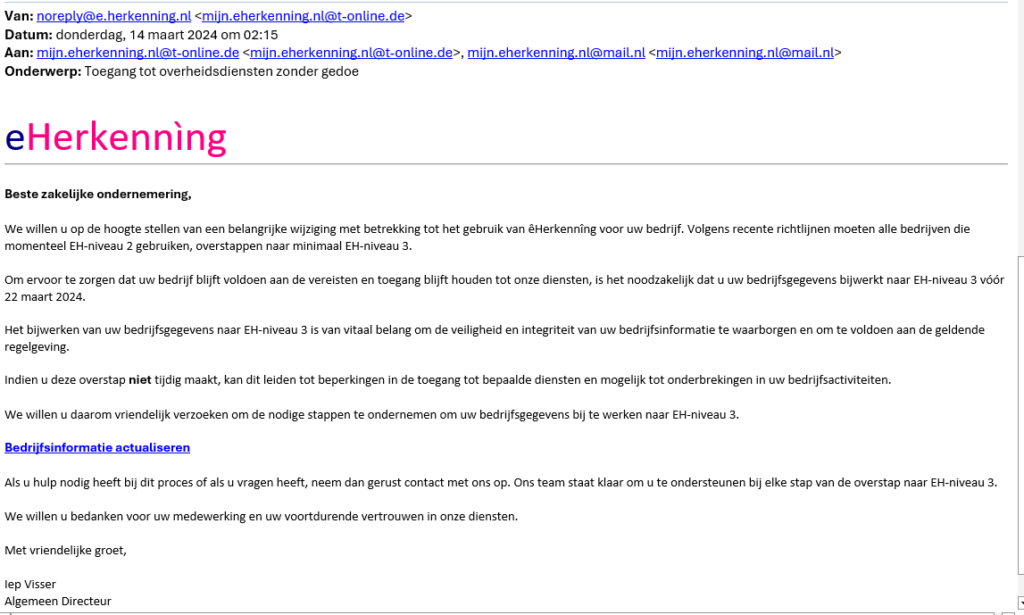Phising e-mails in circulation eHerkenning

Phishing is a form of fraud. Always keep a close eye on who the email is coming from before clicking on a link or attachment. Note: Deceptive emails using the name of eHerkenning are circulating. It is crucial not to respond to requests in these emails as this is phishing. So do not click on any links and delete the email immediately.
"There are currently several known phishing mails from different senders. Please check the sender of the message carefully at all times. Emails sent from Reconi end with @reconi.nl. More information about phishing can be found at: www.FraudeHelpdesk.nl/actueel/valse-emails/".
What is phishing?
Phishing is a form of online fraud that involves sending messages such as emails, text messages or WhatsApp messages. These messages appear to come from trusted sources, such as government agencies and banks, to trick users into getting their login credentials, credit card information, PIN or other personal information.
Tips for recognizing phishing
It can be difficult to tell a phony e-mail from a real one. Here are some guidelines to help recognize phishing emails:
- Sender: Check the sender's email address, especially what's after the @ sign. Sometimes, the difference between a legitimate and fake email address is subtle.
- Salutation: Legitimate companies often use your name in their correspondence. Pay attention to general salutations such as "Dear Sir/Madam" or "Dear Customer".
- Request for personal/login details: Fake emails often contain requests to 'check', 'update' or 'complete' your personal or login details. Never just click on links in these emails.
- Language and design: Fake e-mails are becoming more and more professional with correct language and design. Compare them with previous correspondence from the company and keep an eye out for irregularities.
- Speed: Be wary of emails that exert pressure with terms like "final warning" or "emergency notifications."
- Left: Don't just click on links in emails that you don't trust, as they can install malicious software or lead to fake websites.
- Short links: Be careful with shortened links, such as bit.ly or t.co, as you won't be able to control where they lead.
- Attachments: Never open attachments in emails that you don't trust, as they may contain malicious software.
If you accidentally clicked on a link, scanned a QR code, or entered your eHerkenning login details via e-mail or SMS, please contact the Fraud Helpdesk immediately.
Source: https://www.eherkenning.nl/en/news#fraudulent-eherkenning-emails-in-circulation.
See the example below of phishing emails circulating right now:

